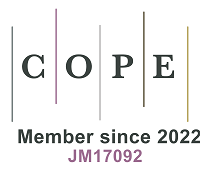REFERENCES
1. Environmental Protection Agency (EPA). Lifetime health advisories and health effects support documents for perfluorooctanoic acid and perfluorooctane sulfonate. 2016. Available from: https://www.govinfo.gov/content/pkg/FR-2016-05-25/pdf/2016-12361.pdf. [Last accessed on 19 Apr 2024].
2. Midasch O, Drexler H, Hart N, Beckmann MW, J Angerer. Transplacental exposure of neonates to perfluorooctanesulfonate and perfluorooctanoate: a pilot study. Int Arch Occup Environ Health 2007;80:643-8.
3. Beesoon S, Webster GM, Shoeib M, Harner T, Benskin JP, Martin JW. Isomer profiles of perfluorochemicals in matched maternal, cord, and house dust samples: manufacturing sources and transplacental transfer. Environ Health Perspect 2011;119:1659-64.
4. Lee YJ, Kim MK, Bae J, Yang JH. Concentrations of perfluoroalkyl compounds in maternal and umbilical cord sera and birth outcomes in Korea. Chemosphere 2013;90:1603-9.
5. Cariou R, Veyrand B, Yamada A, et al. Perfluoroalkyl acid (PFAA) levels and profiles in breast milk, maternal and cord serum of French women and their newborns. Environ Int 2015;84:71-81.
6. Fromme H, Mosch C, Morovitz M, et al. Pre- and postnatal exposure to perfluorinated compounds (PFCs). Environ Sci Technol 2010;44:7123-9.
7. Haug LS, Huber S, Becher G, Thomsen C. Characterisation of human exposure pathways to perfluorinated compounds - comparing exposure estimates with biomarkers of exposure. Environ Int 2011;37:687-93.
8. Liu J, Li J, Liu Y, et al. Comparison on gestation and lactation exposure of perfluorinated compounds for newborns. Environ Int 2011;37:1206-12.
9. Goeden HM, Greene CW, Jacobus JA. A transgenerational toxicokinetic model and its use in derivation of Minnesota PFOA water guidance. J Expo Sci Environ Epidemiol 2019;29:183-95.
10. Minnesota Department of Health. Toxicological summary for: perfluorooctanoate. 2020. Available from: https://www.health.state.mn.us/communities/environment/risk/docs/guidance/gw/pfoa.pdf. [Last accessed on 19 Apr 2024].
11. Minnesota Department of Health. Toxicological summary for: perfluorooctane sulfonate. 2020. Available from: https://web.archive.org/web/20201028141723/https://www.health.state.mn.us/communities/environment/risk/docs/guidance/gw/pfos.pdf. [Last accessed on 19 Apr 2024].
12. Minnesota Department of Health. Toxicological summary for: perfluorohexane sulfonate. 2023. Available from: https://www.health.state.mn.us/communities/environment/risk/docs/guidance/gw/pfhxs.pdf. [Last accessed on 19 Apr 2024].
13. Gyllenhammar I, Benskin JP, Sandblom O, et al. Perfluoroalkyl acids (PFAAs) in serum from 2-4-month-old infants: influence of maternal serum concentration, gestational age, breast-feeding, and contaminated drinking water. Environ Sci Technol 2018;52:7101-10.
14. Gyllenhammar I, Benskin JP, Sandblom O, et al. Perfluoroalkyl acids (PFAAs) in children’s serum and contribution from PFAA-contaminated drinking water. Environ Sci Technol 2019;53:11447-57.
15. Environmental Protection Agency (EPA). About the exposure factors handbook. Available from: https://www.epa.gov/expobox/about-exposure-factors-handbook. [Last accessed on 19 Apr 2024].
16. Minnesota Department of Health. Toxicological summary for: perfluorooctanoate. 2024. Available from: https://www.health.state.mn.us/communities/environment/risk/docs/guidance/gw/pfoa2024.pdf. [Last accessed on 19 Apr 2024].
17. Minnesota Department of Health. Toxicological summary for: perfluorooctane sulfonate. 2024. Available from: https://www.health.state.mn.us/communities/environment/risk/docs/guidance/gw/pfos.pdf. [Last accessed on 19 Apr 2024].
18. Neville MC, Allen JC, Archer PC, et al. Studies in human lactation: milk volume and nutrient composition during weaning and lactogenesis. Am J Clin Nutr 1991;54:81-92.
19. Exposure factors handbook. Chapter 15 - Human milk intake. Available from: https://www.epa.gov/sites/default/files/2015-09/documents/efh-chapter15.pdf. [Last accessed on 19 Apr 2024].
20. Environmental Protection Agency (EPA). Update for Chapter 3 - Ingestion of water and other select liquids. Available from: https://www.epa.gov/sites/default/files/2019-02/documents/efh_-_chapter_3_update.pdf. [Last accessed on 19 Apr 2024].
21. Li Y, Andersson A, Xu Y, et al. Determinants of serum half-lives for linear and branched perfluoroalkyl substances after long-term high exposure - A study in Ronneby, Sweden. Environ Int 2022;163:107198.
22. Kang H, Kim HS, Yoon YS, et al. Placental transfer and composition of perfluoroalkyl substances (PFASs): a korean birth panel of parent-infant triads. Toxics 2021;9:168.
23. Li Y, Lu X, Yu N, et al. Exposure to legacy and novel perfluoroalkyl substance disturbs the metabolic homeostasis in pregnant women and fetuses: a metabolome-wide association study. Environ Int 2021;156:106627.
24. Appel M, Forsthuber M, Ramos R, et al. The transplacental transfer efficiency of per- and polyfluoroalkyl substances (PFAS): a first meta-analysis. J Toxicol Environ Health B Crit Rev 2022;25:23-42.
25. Pizzurro DM, Seeley M, Kerper LE, Beck BD. Interspecies differences in perfluoroalkyl substances (PFAS) toxicokinetics and application to health-based criteria. Regul Toxicol Pharmacol 2019;106:239-50.
26. Environmental Protection Agency (EPA). PFOS health effects support document. 2016. Available from: https://www.regulations.gov/document/EPA-HQ-OW-2014-0138-0040. [Last accessed on 19 Apr 2024].
27. Thompson J, Lorber M, Toms LL, Kato K, Calafat AM, Mueller JF. Use of simple pharmacokinetic modeling to characterize exposure of Australians to perfluorooctanoic acid and perfluorooctane sulfonic acid. Environ Int 2010;36:390-7.
28. Friis-hansen B. Body water compartments in children: changes during growth and related changes in body composition: Kenneth D. Blackfan memorial lecture. Pediatrics 1961;28:169-81.
29. Office of Environmental Health Hazard Assessment. Public health goals for perfluorooctanoic acid and perfluorooctane sulfonic acid in drinking water. Available from: https://oehha.ca.gov/media/downloads/air/public-health-goal-document/pfoapfosphgfinaldraft040524.pdf. [Last accessed on 19 Apr 2024].
30. Johanson G, Gyllenhammar I, Ekstrand C, et al. Quantitative relationships of perfluoroalkyl acids in drinking water associated with serum concentrations above background in adults living near contamination hotspots in Sweden. Environ Res 2023;219:115024.
31. Verner MA, Ngueta G, Jensen ET, et al. A simple pharmacokinetic model of prenatal and postnatal exposure to perfluoroalkyl substances (PFASs). Environ Sci Technol 2016;50:978-86.
32. Extract data from charts: WebPlotDigitizer. Available from: https://automeris.io/WebPlotDigitizer/. [Last accessed on 19 Apr 2024].
33. Thomsen C, Haug LS, Stigum H, Frøshaug M, Broadwell SL, Becher G. Changes in concentrations of perfluorinated compounds, polybrominated diphenyl ethers, and polychlorinated biphenyls in Norwegian breast-milk during twelve months of lactation. Environ Sci Technol 2010;44:9550-6.
34. Abraham K, Mielke H, Fromme H, et al. Internal exposure to perfluoroalkyl substances (PFASs) and biological markers in 101 healthy 1-year-old children: associations between levels of perfluorooctanoic acid (PFOA) and vaccine response. Arch Toxicol 2020;94:2131-47.
35. US Environmental Protection Agency (EPA). Methodology for deriving ambient water quality criteria for the protection of human health (2000). Available from: https://nepis.epa.gov/Exe/ZyPDF.cgi/20003D2R.PDF?Dockey=20003D2R.PDF. [Last accessed on 19 Apr 2024].
36. National Center for Environmental Health (U.S.). National report on human exposure to environmental chemicals. U.S. 2022. Available from: https://stacks.cdc.gov/view/cdc/133100. [Last accessed on 19 Apr 2024].
37. Minnesota Department of Health. Statement of need and reasonableness: proposed amendments to the rules on health risk limits for groundwater. Available from: https://www.health.state.mn.us/communities/environment/risk/docs/rules/hrlsonar23main.pdf. [Last accessed on 19 Apr 2024].
38. LaKind JS, Naiman J, Verner MA, Lévêque L, Fenton S. Per- and polyfluoroalkyl substances (PFAS) in breast milk and infant formula: a global issue. Environ Res 2023;219:115042.
39. LaKind JS. Invited perspective: PFAS in breast milk and infant formula-it’s time to start monitoring. Environ Health Perspect 2023;131:31301.
40. Bogdan AR, Klos KS, Greene CW, Huset CA, Barry KM, Goeden HM. Per- and polyfluoroalkyl substances (PFAS) in powdered infant formula: potential exposures and health risks. J Environ Expo Assess 2024;3:14.
41. Minnesota Department of Health. PFAS and health. Available from: https://www.health.state.mn.us/communities/environment/hazardous/topics/pfashealth.html. [Last accessed on 19 Apr 2024].
42. Minnesota Department of Health. Interactive dashboard for PFAS testing in drinking water. Available from: https://www.health.state.mn.us/communities/environment/water/pfasmap.html. [Last accessed on 19 Apr 2024].
43. Environmental Protection Agency (EPA). Monitoring unregulated drinking water contaminants. Fifth unregulated contaminant monitoring rule. Available from: https://www.epa.gov/dwucmr/fifth-unregulated-contaminant-monitoring-rule. [Last accessed on 19 Apr 2024].







